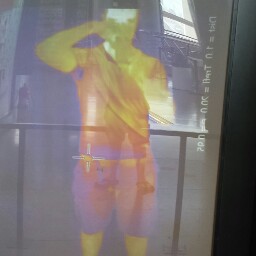Dean M Jenkins
age ~69
from La Canada, CA
- Also known as:
-
- Dean L Jenkins
- Dean J Jenkins
- Jean M Jenkins
- Jeanne F Jenkins
- Gayle Dean
- Phone and address:
-
4450 Commonwealth Ave, La Canada, CA 91011
8183780292
Dean Jenkins Phones & Addresses
- 4450 Commonwealth Ave, La Canada Flt, CA 91011 • 8183780292
- La Canada, CA
- Pasadena, CA
- Los Angeles, CA
- La Canada Flt, CA
Work
-
Company:D & m floral glass
-
Address:711 Arroyo St, San Fernando, CA 91340
-
Phones:8183659493
-
Position:Owner
-
Industries:Flowers, Nursery Stock, and Florists' Supplies
Education
-
Degree:High school graduate or higher
Isbn (Books And Publications)

Resumes

Technologist
view sourceLocation:
Los Angeles, CA
Industry:
Computer Hardware
Work:
Western Digital May 2008 - Jul 2017
Technologist
Western Digital Sandisk May 2008 - Jul 2017
Technologist
Aristos Logic Apr 2002 - Apr 2008
Senior Principal Engineer
Paracel Jan 2000 - Mar 2002
Staff Hardware Engineer
Celera Corporation 2000 - 2002
Staff Engineer
Technologist
Western Digital Sandisk May 2008 - Jul 2017
Technologist
Aristos Logic Apr 2002 - Apr 2008
Senior Principal Engineer
Paracel Jan 2000 - Mar 2002
Staff Hardware Engineer
Celera Corporation 2000 - 2002
Staff Engineer
Education:
The Collins College of Hospitality Management at Cal Poly Pomona
Bachelors, Bachelor of Science, Engineering Pasadena High School
Bachelors, Bachelor of Science, Engineering Pasadena High School
Skills:
Embedded Systems
Debugging
Storage
Asic
Soc
Hardware
Fpga
Pcie
Scsi
Sata
System Architecture
Processors
Firmware
Raid
Embedded Software
Computer Hardware
Linux
Hard Drives
Arm
Hardware Architecture
Testing
Fibre Channel
Microprocessors
Failure Analysis
Electronics
Ssd
Device Drivers
Rtos
Usb
Signal Integrity
Pcb Design
Application Specific Integrated Circuits
Serial Ata
System on A Chip
System Design
Logic Analyzer
Rtl Design
Ic
Systemverilog
Verilog
I2C
Embedded Linux
Systems Design
Cross Functional Team Leadership
Arm Architecture
Xilinx
Semiconductors
Debugging
Storage
Asic
Soc
Hardware
Fpga
Pcie
Scsi
Sata
System Architecture
Processors
Firmware
Raid
Embedded Software
Computer Hardware
Linux
Hard Drives
Arm
Hardware Architecture
Testing
Fibre Channel
Microprocessors
Failure Analysis
Electronics
Ssd
Device Drivers
Rtos
Usb
Signal Integrity
Pcb Design
Application Specific Integrated Circuits
Serial Ata
System on A Chip
System Design
Logic Analyzer
Rtl Design
Ic
Systemverilog
Verilog
I2C
Embedded Linux
Systems Design
Cross Functional Team Leadership
Arm Architecture
Xilinx
Semiconductors

Dean Jenkins
view source
Dean Patsy Jenkins
view source
Dean Jenkins
view source
Dean Jenkins
view sourceName / Title
Company / Classification
Phones & Addresses
Owner
D & M Floral Glass
Flowers, Nursery Stock, and Florists' Supplies
Flowers, Nursery Stock, and Florists' Supplies
711 Arroyo St, San Fernando, CA 91340
Website: dmfloralinc.com
Website: dmfloralinc.com
Manager Strategy And Technology
PNC Bank, National Association
Metal Heat Treating
Metal Heat Treating
1900 E 9Th St, Santa Monica, CA 90404
Manager Strategy And Technology
PNC Bank, National Association
1900 E 9 St, Santa Monica, CA 90404
3104531852, 3104535672
3104531852, 3104535672
Vice President
EDUCATION RESOURCES CORPORATION
President, Owner
D & M FLORAL GLASS, INC
Dist/Glass Containers · Nursery & Florist Merchant Whols
Dist/Glass Containers · Nursery & Florist Merchant Whols
711 Arroyo St, San Fernando, CA 91340
2710 E Norberry St, Lancaster, CA 93535
8183659493
2710 E Norberry St, Lancaster, CA 93535
8183659493
Us Patents
-
Power Reallocation For Memory Device
view source -
US Patent:20220293195, Sep 15, 2022
-
Filed:Mar 12, 2021
-
Appl. No.:17/199534
-
Inventors:- San Jose CA, US
Dean Jenkins - La Canada-Flintridge CA, US
Hedan Zhang - Santa Clara CA, US
Bret Winkler - Mission Viejo CA, US
Ning Ye - San Jose CA, US -
International Classification:G11C 16/30
G06F 30/367
G06F 30/392
H01L 23/367
G06F 30/398
G06F 119/08
G06F 119/02
G06F 119/06
G06F 113/18 -
Abstract:A data storage device including, in one implementation, a number of memory die packages disposed on a substrate within the data storage device. Each memory die package has a die density that includes one or more memory dies. The die density of each memory die package is configured to provide an even thermal distribution across the number of memory die packages. The respective die densities of two memory of the die packages are different from each other.
-
Retrieval Of Network Site Data With Data Storage Device Utilizing User Authentication
view source -
US Patent:20200106827, Apr 2, 2020
-
Filed:Oct 2, 2019
-
Appl. No.:16/591473
-
Inventors:- San Jose CA, US
Dean M. JENKINS - La Canada-Flintridge CA, US -
International Classification:H04L 29/08
-
Abstract:A data storage system including a data storage device located on a first network and configured to download data from a network site based on universal resource locator (“URL”) information of the network site, and an electronic device located on a second network different than the first network. The electronic device determines the URL information of the network site, receives user authentication data, receives a network address of the data storage device from a server using the user authentication data, and transmits the URL information to the data storage device using the network address of the data storage device. This causes the data storage device to download data from the network site contingent on correct user authentication being provided.
-
Data Storage Device With Secure Access Based On Motions Of The Data Storage Device
view source -
US Patent:20190018949, Jan 17, 2019
-
Filed:Jul 13, 2017
-
Appl. No.:15/649562
-
Inventors:- San Jose CA, US
Lei ZHANG - San Jose CA, US
Wei XI - Mission Viejo CA, US
Dean Mitcham JENKINS - La Canada-Flintridge CA, US
David W. CHEW - San Juan Capistrano CA, US
Jianguo ZHOU - Foothill Ranch CA, US -
International Classification:G06F 21/36
G06F 3/06 -
Abstract:Systems and methods are disclosed for providing secure access to a data storage device. A user may move the data storage device (e.g., wave, twist, etc.). The data storage device may determine whether the motions valid and may allow access to the data storage device (e.g., to non-volatile memory of the data storage device) when the motions are valid.
-
Data Storage Device With Secure Access Based On Tap Inputs
view source -
US Patent:20190018972, Jan 17, 2019
-
Filed:Jul 13, 2017
-
Appl. No.:15/649553
-
Inventors:- San Jose CA, US
Lei ZHANG - San Jose CA, US
Wei XI - Mission Viejo CA, US
Dean Mitcham JENKINS - La Canada-Flintridge CA, US
David W. CHEW - San Juan Capistrano CA, US
Jianguo ZHOU - Foothill Ranch CA, US -
International Classification:G06F 21/62
H04L 29/06 -
Abstract:Systems and methods are disclosed for providing secure access to a data storage device. A user may provide tap inputs, such as taps or knocks, on an enclosure of the data storage device. The data storage device may determine whether the tap inputs are valid and may allow access to the data storage device (e.g., to non-volatile memory of the data storage device) when the tap inputs are valid.
-
Automatic Hostname Assignment For Microservers
view source -
US Patent:20190004826, Jan 3, 2019
-
Filed:Jun 30, 2017
-
Appl. No.:15/640295
-
Inventors:- San Jose CA, US
Dean M. Jenkins - La Canada Flintridge CA, US -
International Classification:G06F 9/445
G06F 13/20 -
Abstract:A Chassis Baseboard Management Controller (CBMC) includes at least one memory for storing data related to a plurality of microservers in a server chassis. A request is received from a remote device for microserver hostnames to build a locality map for a storage or processing pool in a distributed storage or processing network. A device slot number corresponding to a physical location of the microserver in the server chassis is determined for each microserver. The determined device slot number is appended to a chassis hostname to create respective microserver hostnames. According to one aspect, a microserver hostname is received from a CBMC and stored in a memory of a μBMC of a microserver. The microserver hostname is retrieved from the memory by a processor of the microserver during a boot sequence. The retrieved microserver hostname is set as a hostname for communicating via at least one network interface.
-
Baseboard Management Controllers For Server Chassis
view source -
US Patent:20190004901, Jan 3, 2019
-
Filed:Jun 30, 2017
-
Appl. No.:15/640234
-
Inventors:- San Jose CA, US
Dean M. Jenkins - La Canada Flintridge CA, US
Eric Lee - Denver CO, US -
International Classification:G06F 11/14
G06F 13/20
G06F 1/32 -
Abstract:A server chassis includes a plurality of microservers with each microserver including a Micro Baseboard Management Controller (μBMC) and at least one processor for controlling operation of the microserver. A BMC communication manager of the server chassis directly communicates with each μBMC of the plurality of micro-servers. A Chassis BMC (CBMC) connects to the BMC communication manager and communicates with the BMC communication manager via a plurality of communication protocols. The BMC communication manager translates at least one of the plurality of protocols to a different protocol for direct communication with each μBMC. According to one aspect, a μBMC is connected to an out-of-band port of a microserver for communicating with at least one processor of the microserver. According to another aspect, the BMC communication manager includes at least one CBMC connector for communicating with the CBMC, and a plurality of μBMC ports for communicating directly with a respective μBMC.
-
Autonomously Operating Light Emitting Devices Providing Detection And Warning Of Hazardous Condition On Path Of Travel
view source -
US Patent:20180096572, Apr 5, 2018
-
Filed:Sep 30, 2016
-
Appl. No.:15/282977
-
Inventors:- Irvine CA, US
DEAN MITCHAM JENKINS - LA CANADA-FLINTRIDGE CA, US -
International Classification:G08B 7/06
H05B 33/08
H05B 37/02
F21V 23/04
H04N 7/18 -
Abstract:A system is disclosed comprising a plurality of light emitting devices located along a path of travel, each light emitting device comprising a light emitting source, a sensor, a communication module, and a processor, wherein when a first one of the plurality of light emitting devices is activated, the processor in the first light emitting device is configured to detect one or more physical structures surrounding the first light emitting device, detect one or more other light emitting devices, and based at least in part on the detection of the one or more physical structures and the one or more other light emitting devices, determine a location of the first light emitting device with respect to the path of travel.
-
Temperature-Based Data Refreshing
view source -
US Patent:20170257940, Sep 7, 2017
-
Filed:May 23, 2017
-
Appl. No.:15/602725
-
Inventors:- Irvine CA, US
Dean Mitcham JENKINS - La Canada-Flintridge CA, US
Dale Charles MAIN - La Canada-Flintridge CA, US -
International Classification:H05K 1/02
G11C 16/34
G11C 7/04
G11C 16/10
G11B 5/09 -
Abstract:Systems and methods are disclosed for managing temperature in a data storage device. A data storage device includes non-volatile solid-state memory, a temperature sensor, a heating device, and a controller. The controller is configured to receive a temperature signal from the temperature sensor indicating a temperature of at least a portion of the data storage device, determine that the temperature is below a first predetermined threshold, activate the heating device to increase the temperature of the at least a portion of the data storage device, and write data associated with a write command to the non-volatile solid-state memory.

Dean Jenkins
view source
Dean Jenkins
view source
Dean Jenkins
view source
Dean Jenkins
view source
Dean Jenkins
view source
Dean Jenkins
view source
Dean Jenkins
view source
Dean Jenkins
view sourceMyspace
Googleplus

Dean Jenkins

Dean Jenkins

Dean Jenkins

Dean Jenkins

Dean Jenkins

Dean Jenkins

Dean Jenkins
Work:
MontaVista - Embedded Linux Engineer

Dean Jenkins
Flickr
Youtube
Classmates

Dean Jenkins
view sourceSchools:
Integrated High School Stephenville Peru 1984-1988
Community:
Linda Emmans, Karen Pottle, Greg Sim, William Eveleigh, Debra Fradsham, Edward Holloway

Dean Jenkins
view sourceSchools:
East Grand Forks High School East Grand Forks MN 1981-1985
Community:
Karalee Mathisen, Rhonda Korba

Dean Jenkins
view sourceSchools:
General Loretteville High School Loretteville Kuwait 1990-1991
Community:
Eric Renaud, Bruno Couture, Stephan Martel, Valerie Laurin, Sonia Drolet, Genevieve Parent, Julie D'astous, Caroline Fleury, Francois Gagne, Cathy Bouchard, Simon Labonte, Chantal Marcotte

Dean Jenkins
view sourceSchools:
Seaside Heights Elementary School Seaside OR 1979-1981
Community:
Anthony Carey, Colleen Adams, Rochelle Gasak, Judy Stinnett, Jennifer Lilly

Dean Jenkins
view sourceSchools:
Harding High School Charlotte NC 1965-1968
Community:
Donna Furr, Mike Randall, Sara Shipes

dean JENKINS, Jonesboro H...
view source
Dean Jenkins | Dodgeville...
view source
Dean Jenkins, Jonesboro H...
view sourcePlaxo

Dean Jenkins
view sourceOwner of the 'Coyotees' chain of Nightclubs, Restaurants and Theme cafes in Thailand.
Previously spent 7 years in IT - consulting for Intuitive Systems... Owner of the 'Coyotees' chain of Nightclubs, Restaurants and Theme cafes in Thailand.
Previously spent 7 years in IT - consulting for Intuitive Systems, Siebel, InterX and Fineos.
Get Report for Dean M Jenkins from La Canada, CA, age ~69



















